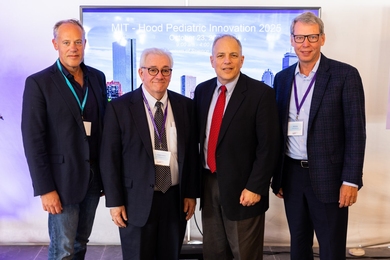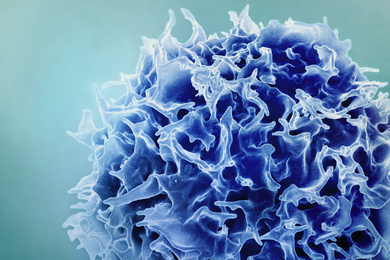The editor of the world's largest chemical magazine encouraged researchers to call her with story ideas about their own research or others' at a talk last Friday sponsored by the Department of Chemistry.
Madeleine Jacobs, editor-in-chief of Chemical & Engineering News (C&EN), said that one of the most common questions she receives from scientists is how she chooses what stories go into the magazine. Specifically referring to C&EN's science and technology department, Ms. Jacobs explained that the 10 writers there "try to spread their nets as widely as possible" to find stories by reading journals and e-mail messages, taking phone calls and attending meetings.
"They're inundated with information," she said. "They then try to distill it all down to the 10 or so articles that we'll put in the magazine each week."
What makes a good story? "In a word, we're looking for something that's newsworthy." That means stories that not only have some aspect of novelty or uniqueness, but also have some breadth. "In other words," Ms. Jacobs said, "someone outside the narrow field [of the work itself] will find it interesting."
She stressed the importance "of people such as yourselves to bring to our attention stories we should do." Ms. Jacobs said that many scientists she's talked to say they don't want to call the magazine with story ideas, such as an article they have coming out in a technical journal, "because they're afraid of tooting their own horns." However, she said, "if you don't call, there is a chance that we'll miss it." She also encouraged the scientists at her talk to call the MIT News Office for help in publicizing their work.
Scientists can also, of course, call the magazine about colleagues' work that they find interesting and newsworthy. She noted that two MIT faculty members already do so in their capacity as members of the magazine's advisory board. Professor Stephen J. Lippard, head of the Department of Chemistry, and Robert S. Langer, the Germeshausen Professor of Chemical and Biomedical Engineering in the Department of Chemical Engineering, also answer questions from C&EN editors about various issues or problems.
C&EN recently went online with the full texts of stories and value-added links. The online version, which will be free until January 1999, is at http://pubs.acs.org/cen/. For information on how to contact Ms. Jacobs or other members of her staff, go to http://pubs.acs.org/cgi-bin/cenmaster.cgi?staff.
A version of this article appeared in MIT Tech Talk on November 4, 1998.





